Carp polyculture provides large fish for cash, small fish for nutrition
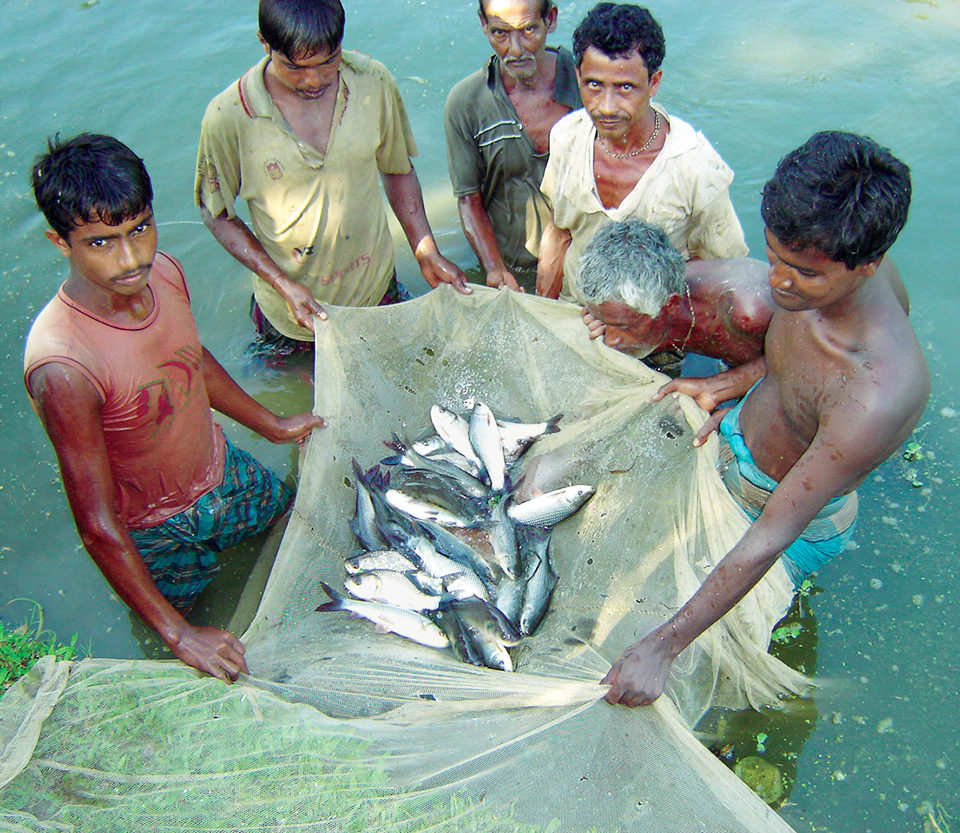
Many of the inland water bodies in Bangladesh are now overfished due to population pressure. With the government’s active support, polyculture of Indian major and Chinese carp has been introduced to increase the fish supply. However, the nutritional status of rural people remains low because many farmers grow the fish primarily as cash crops rather than food for their families.
Sustainable aquaculture technology that combines large carp as a cash crop and small indigenous species as food fish for the families of small farmers is now being developed. Since the availability of manure, feed, and fertilizer inputs for farm ponds is limited, improving yields through better fish stocking schemes in which the fish improve the energy path through the natural food web offer a significant economic boost for farmers.
Varied culture species
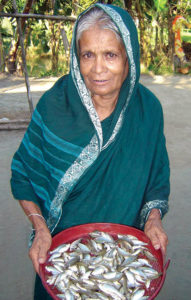
The authors recently carried out a study supported under a grant from the U.S.-Israel Cooperative Development Research Program on food web-environment-fish interactions in the polyculture practiced in Bangladesh. This culture method traditionally combines the Indian major carps rohu (Labeo rohita); catla (Catla catla); and mrigal (Cirrhinus cirrhosus).
The research modified the fish composition to include the small carps mola (Amblypharingodon mola) and punti (Puntius sophore) and the replacement of the bottom feeder mrigal by common carp (Cyprinus carpio). Chinese silver carp (Hypophthalmitrix molitrix), an inexpensive species that farmer families can afford to eat instead of selling, is currently being tested.
The inclusion of Chinese carp poses new scientific and management questions in relation to their impacts on pond ecosystems. Silver carp, which feed in the water column, are known to strongly affect water quality. They are expected to compete with some of the cash and food species while developing synergistic relationships with others.
Part of the study evaluated the effects of silver carp and each indigenous food species on pond ecology and the growth, survival, and yield of the large and small fish. Eighteen 100-square-meter experimental ponds at the Mymensingh campus of Bangladesh Agricultural University were stocked with 100 rohu, catla, and common carp, with or without 250 punti or mola. Ten silver carp were also added to half of the ponds.
Nutrient flow, nitrification
In the absence of silver carp, common carp and punti searching for food stirred the mud pond bottom, facilitating nutrient flow through the autotrophic food web and resuspending particles that provided substrate in the water column for the bacteria responsible for nitrification. The abundant phytoplankton provided food mainly for the zooplankton, the herbivorous water column-feeding rohu, and the phytoplankton grazers mola. Catla are surface feeders that mainly capture zooplankton. Particles from all ecosystem components gradually settled downward, providing organic matter for the decomposing bacteria mainly located in the pond bottom.
In the presence of silver carp, nitrification was promoted, and large amounts of phytoplankton, zooplankton, and suspended particles were grazed by this very efficient filter feeder. These depleted resources did not affect the survival of the other large fish or the reproduction of the small fish, but affected the plankton-eating fish performance.

Effects on production, income
With silver carp in ponds, the harvested biomass of rohu was reduced about 20 percent, that of catla 25 percent, and that of mola 50 percent. The bottom-feeding common carp were not affected, while punti biomass was reduced 10 percent. In compensation, the silver carp biomass increased total fish biomass by 20 percent.
Although the silver carp were cheaper than similar-sized Indian major carps, their faster growth rate led to larger fish and total yield for the silver carp, which was reflected in the income received when the fish obtained in the experiment were sold. In rural markets in Bangladesh, both small indigenous fish and large fish species weighing 100 to 250 grams are sold at 35 to 45 taka/kg (U.S. $.50 to .65/kg), catla and rohu weighing 250 to 500 grams at 45 to 65 taka/kg (U.S. $.65 to .93/kg), and silver carp weighing 500 to 1,000 grams at 50 to 60 taka/kg (U.S. $.72 to .86/kg).
Figures 1 and 2 present the yields and incomes obtained applying those prices to the harvested biomass in each polyculture combination tested. The decreased income from selling the more expensive Indian major carps was more than compensated by that obtained from the silver carp, which increased total income by 13 to 24 percent as compared to the corresponding polyculture without silver carp. The addition of silver carp would allow farmers to sell part of the silver carp crop to balance the income that would be obtained if only Indian major carps were stocked, and the family could consume the rest.
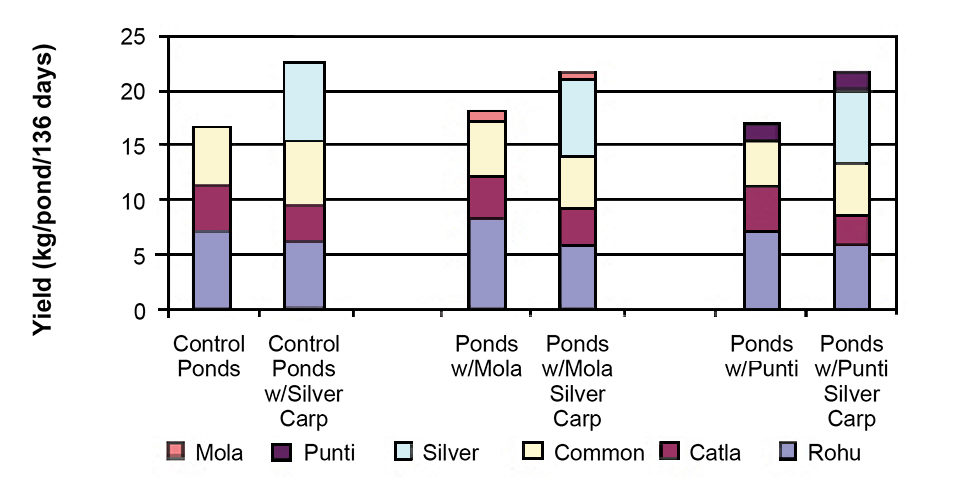
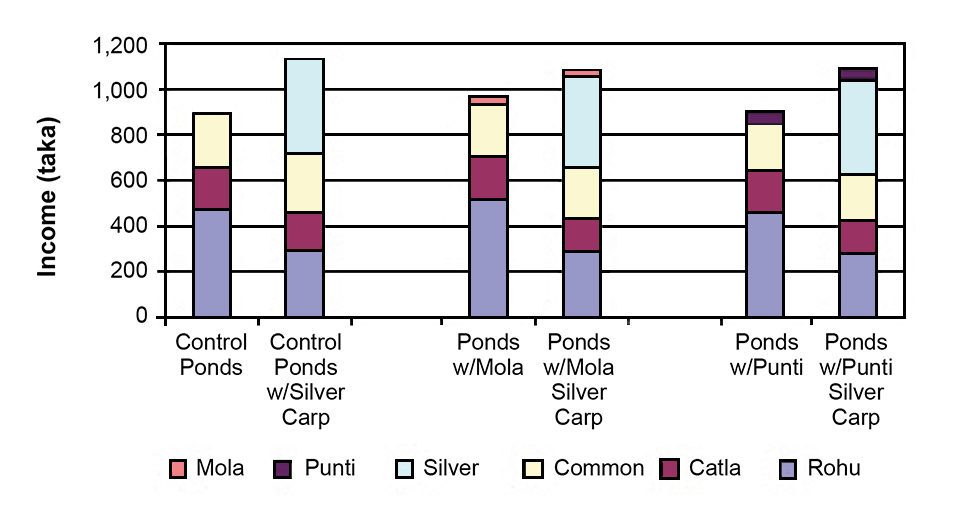
The results described were obtained with 10 silver carp per 100-square-meter pond. The addition of fewer fish might have lesser impact on the other species while maintaining the advantages of higher total yield and income due to the species’ fast growth. Further research with fewer silver carp looks promising.
(Editor’s Note: This article was originally published in the January/February 2007 print edition of the Global Aquaculture Advocate.)
Now that you've reached the end of the article ...
… please consider supporting GSA’s mission to advance responsible seafood practices through education, advocacy and third-party assurances. The Advocate aims to document the evolution of responsible seafood practices and share the expansive knowledge of our vast network of contributors.
By becoming a Global Seafood Alliance member, you’re ensuring that all of the pre-competitive work we do through member benefits, resources and events can continue. Individual membership costs just $50 a year.
Not a GSA member? Join us.
Authors
-
Dr. Ana Milstein
Agricultural Research Organization
Fish and Aquaculture Research Station
Dor MPH of HaCarmel
30820 Israel -
Dr. M.A. Wahab
Department of Fisheries Management
Bangladesh Agricultural University
Mymensingh, Bangladesh -
A. Kadir, M.Sc.
Department of Fisheries Management
Bangladesh Agricultural University
Mymensingh, Bangladesh
Tagged With
Related Posts
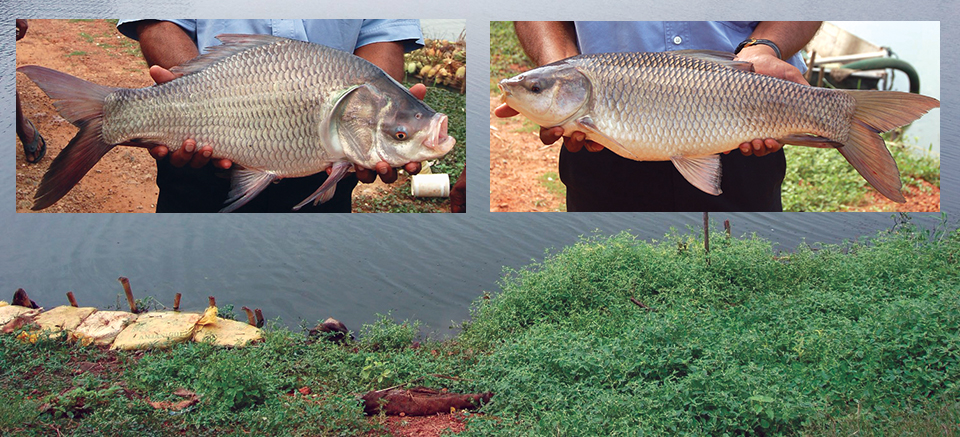
Responsibility
Carp polyculture in India
Carp polyculture with other species originally established through government projects has grown in India thanks to the application of advancing technologies and private financial investments.

Responsibility
A look at integrated multi-trophic aquaculture
In integrated multi-trophic aquaculture, farmers combine the cultivation of fed species such as finfish or shrimp with extractive seaweeds, aquatic plants and shellfish and other invertebrates that recapture organic and inorganic particulate nutrients for their growth.
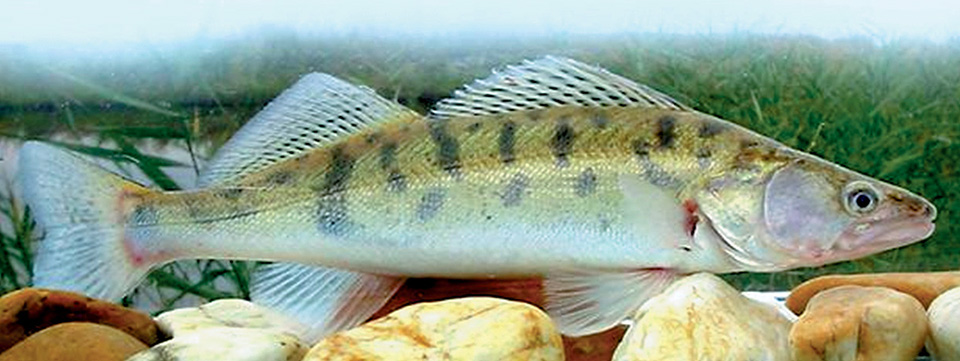
Health & Welfare
Aquaculture in Germany
Germany produces a limited amount of carp, trout, mussels and other species. Although traditional pond-based farms continue to operate, the country’s aquaculture production is trending toward land-based systems that feature efficient resource use and reduced environmental impacts.
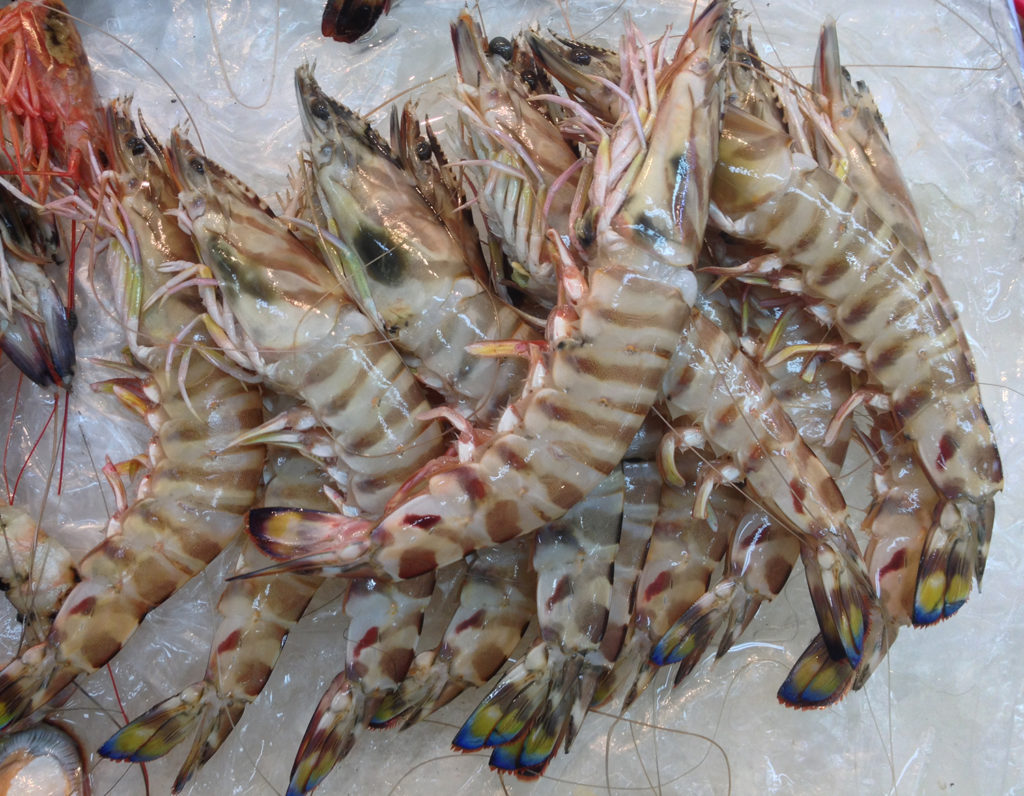
Intelligence
Aquaculture key to increasing seafood supplies to Arab states
Arab States have substantial natural resources to increase aquaculture production. Several types of systems are readily adaptable and can be implemented relatively quickly.


